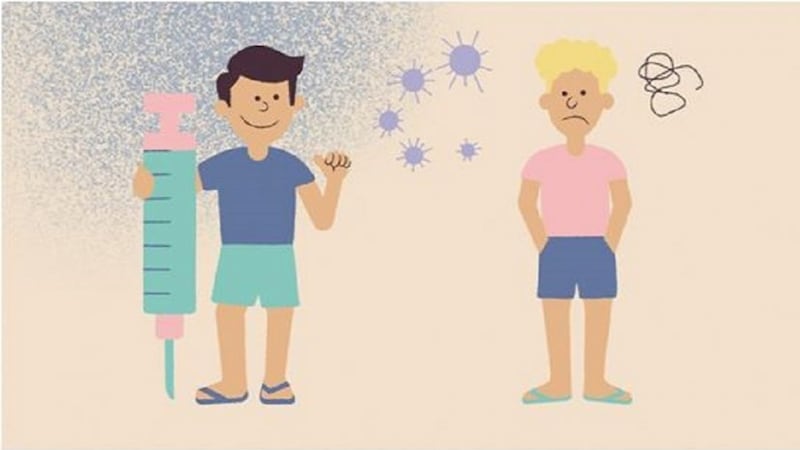The science is clear: the risk of Covid-19 far outweighs the risk of the vaccine
The threat of serious illness or death due to Covid-19 varies across the population. But for nearly everyone, the risk of vaccination is much smaller than the risk posed by an infection, even among groups that do well against Covid-19.
Risk is hard to measure.
It changes minute by minute, and for Covid-19, depends on factors unique to each person: their underlying health, where they live, their personal behaviour.
To make it even more complicated, there are different ways of measuring and communicating risk.
What we can confidently say is that, for nearly everyone, Covid-19 risk is reduced after being vaccinated. When spread across the population, those individual risk reductions add up and reduce the total Covid-19 risk in society.
Let’s start with the basics.
We have two ways of talking about reducing the risk of Covid-19: The absolute risk and the relative risk.
Absolute risk is the likelihood of a person getting a symptomatic Covid-19 infection - or of becoming sick and dying of one - in a given time period.
This can be small, because it depends on underlying factors - the length of the time period, and the amount of virus circulating, among other things. The Pfizer clinical trials found the absolute risk reduction of getting Covid-19 among its vaccinated participants was around 0.84 per cent.
Relative risk is the likelihood of these things happening compared to an equivalent unvaccinated person.
The relative risk reduction for vaccinated people in the trials was more than 90 per cent. This has largely held up in the real world.
That’s a huge difference, yet both numbers are correct. You might be asking: why do we focus on relative risk, instead of absolute risk? After all, we want to know our likelihood of getting Covid-19 in general.
One problem is that it's likely that SARS-CoV-2 will be endemic. That means, over a long period of time, nearly all of us will contract Covid-19 at some point.
The absolute risk of getting Covid-19 in the next month might be a fraction of one per cent; But in the next 50 years, it might be nearly 100 per cent. It all depends on factors outside our individual control.
Relative risk matters because it’s not based on a specific time period, and does not depend on other factors; it just tells us the difference between being vaccinated and not. And what we know about the relative risk reduction of Covid-19 vaccines shows they are highly effective.
The other side of the risk ledger is the vaccine itself.
There is a risk with any medical treatment: Panadol, the contraceptive pill, vaccines. These are usually tiny, and the Covid-19 vaccines, based on current data, are no different.
The most significant side effect associated with the Pfizer vaccine is myorcarditis, a type of heart inflammation.
A massive study from Israel showed that, among more than 5 million vaccinated people, 136 cases of myocarditis were reported shortly after vaccination, nearly all of which were mild cases in young males.
It was a rate about double that of unvaccinated people, meaning the vaccine was likely causing some cases. But that still only amounted to myorcarditis in 1 in 26,000 males and 1 in 218,000 females.
Even the most optimistic rates of serious illness and death from a Covid-19 infection are many times larger than the documented rate of serious vaccine side effects.


